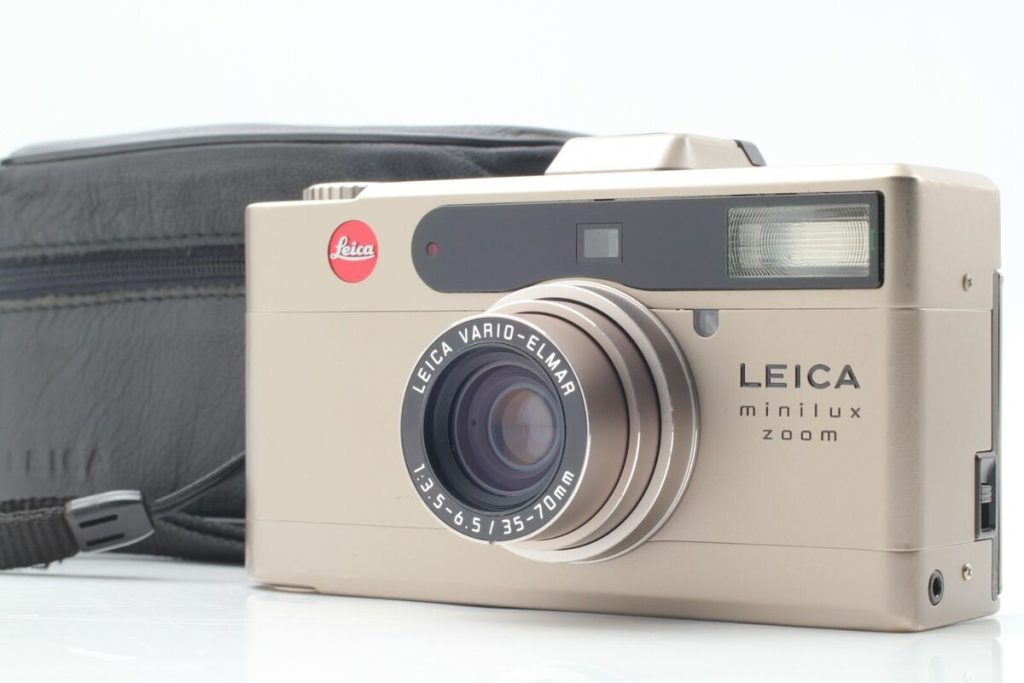The Leica Minilux Zoom is an excellent point-and-shoot 35mm film camera. It’s built to last, with a robust metal body and a classic design.
The biggest complaint about this camera is the incredibly tiny viewfinder. It’s one-eighth the size of the finder on a disposable camera like a Fuji QuickSnap. Here are some Leica Minilux Zoom Review which will help you to buy this.
Features
The Leica Minilux Zoom is an excellent compact point-and-shoot camera that features exceptional optics, advanced features and manual control options. Whether you are a professional photographer or simply looking to take your own stunning images, this camera will ensure you capture all of the most important moments in life with cinematic quality results.
The primary strength of the Minilux is its excellent Summarit 40mm f/2.4 lens, which has six elements in four groups. It is one of the most sophisticated lenses found in point-and-shoot cameras, allowing for outstanding low-light and available light shooting.
The Minilux Zoom also features a variety of manual exposure modes, including Program AE (exposure program), Aperture Priority AE and Manual AE. Changing the aperture in these modes is as simple as touching the shutter button. It also has a viewfinder that displays the selected focus points. Lastly, the camera has automatic film advance and rewind, flash synchronization at all shutter speeds and an infrared auto-focus system.
Design
The Leica Minilux Zoom combines a fine Summarit 2.4/40 lens with the best motorized drive and film rewinding available on any 35mm point-and-shoot. But it also has a few weaknesses that have earned it the reputation of being an excellent but underpowered camera.
The biggest problem with this camera is its AF, which uses an active beam of infrared light to find the subject. It works well for close subjects, but not so good for distant ones.
It takes about 99 seconds to get a full-power bulb exposure, which means it’s impossible to use it to make a portrait of someone who is too far away for active AF to work. But it does a great job at making a decent-looking landscape photo, even in low light.
Performance
The Minilux Zoom is a premium point-and-shoot camera for the rich in the 1990s. It offers no more controls than the simplest point-and-shoot camera, but it can still take pictures with ease.
The only problem with the Minilux is that it won’t focus closer than 2.3 feet (0.7 meters) without the use of filters. This means that you can’t get close enough for a portrait.
Moreover, the lens is a slow f/3.5 at the wide end and a dismally dark f/6.5 at the long end. If you want to take pictures at night, you’ll need a better lens.
It also takes 45 seconds to rewind an entire 36-exposure load of Fuji Velvia 50, a slowness that can become frustrating while you’re waiting to change rolls in between shots. But if you shoot enough rolls, the extra frame beyond the industry standard will make up for it.
Value
If you’re a photographer and you don’t mind toting a premium camera around, the Leica Minilux Zoom is an excellent choice. It offers exceptional optics, advanced features and manual control options that give you the freedom to create stunning images with cinematic quality results every time.
One of the great things about the Minilux is that it’s so simple to use. Everything is right there beneath your left thumb; you don’t have to navigate menus, bespoke functions or secret decoder rings like you do with the Konica Hexar and Nikon 35Ti.
The only real downside is that it has a very slow rewind. It takes 45 seconds to rewind a 36-exposure load of Fuji Velvia 50, which is forever if you’re waiting for the next shot.
You can program any of the three control buttons to become the default power-on settings by holding them in for 3 seconds. This lets you set the camera to start out on your preferred mode each time you turn it on.
